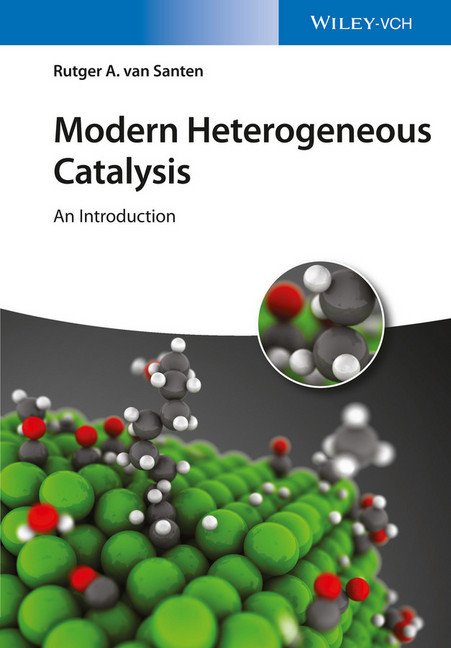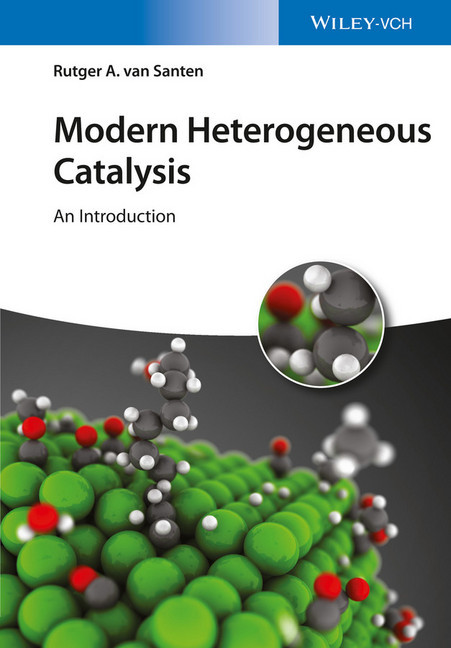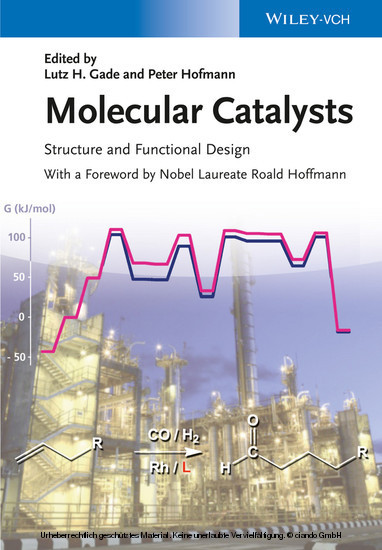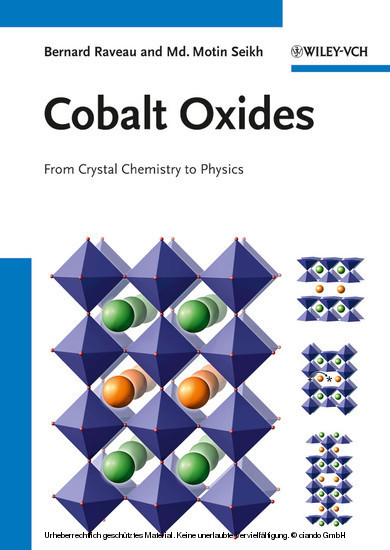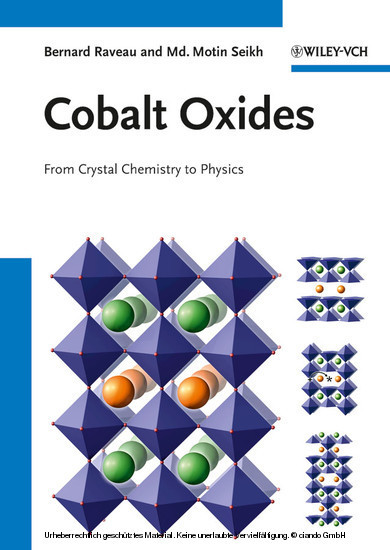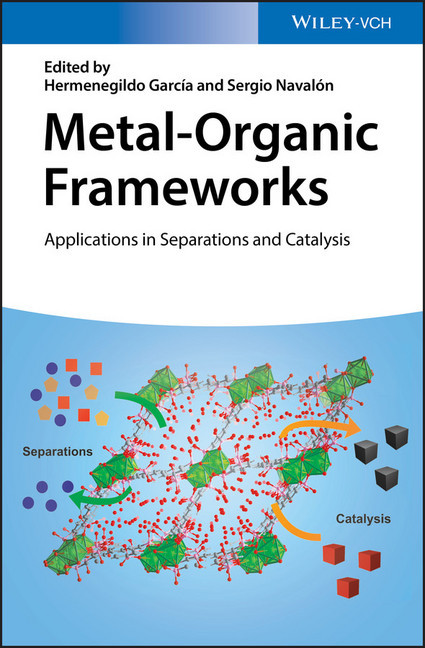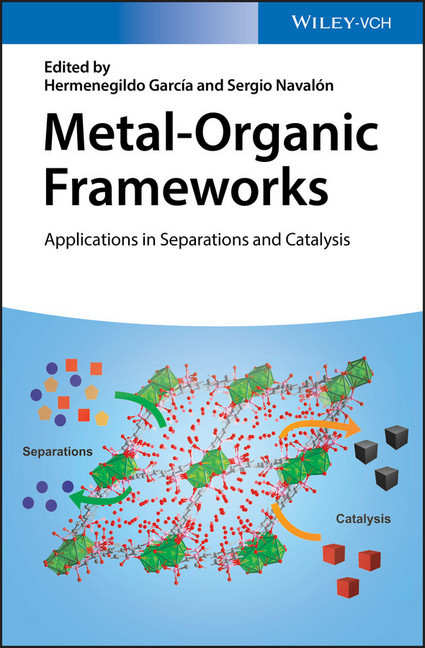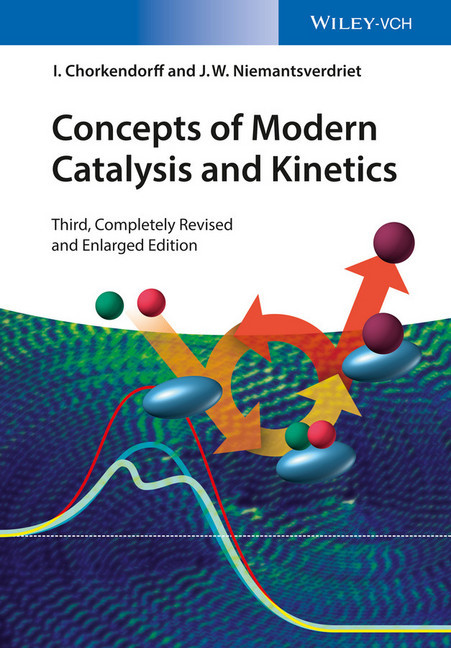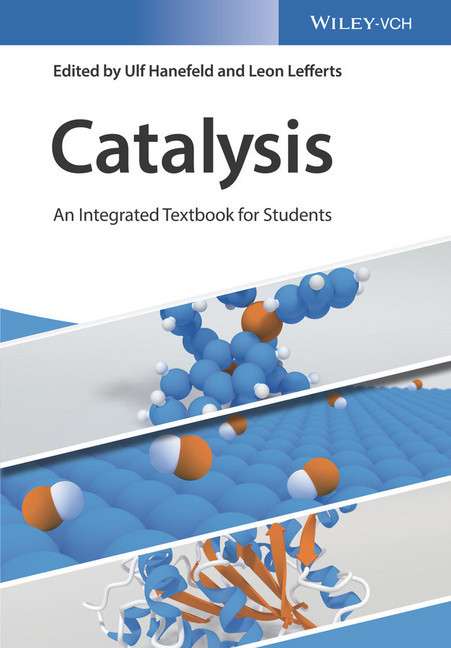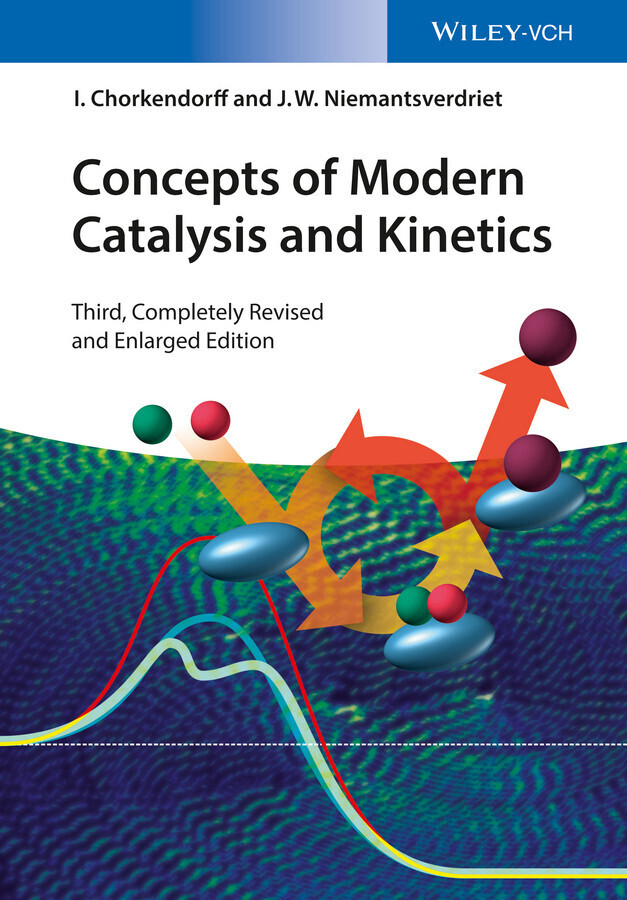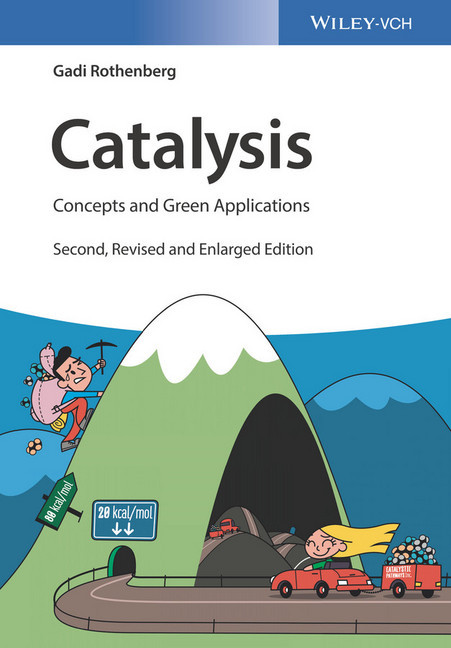Modern Heterogeneous Catalysis
An Introduction
Written by one of the world's leading experts on the topic, this advanced textbook is the perfect introduction for newcomers to this exciting field.
Concise and clear, the text focuses on such key aspects as kinetics, reaction mechanism and surface reactivity, concentrating on the essentials. The author also covers various catalytic systems, catalysis by design, and activation-deactivation. A website with supplementary material offers additional figures, original material and references.
Rutger Anthony van Santen is professor at the Institute of Molecular Complexity at Eindhoven Technical University (TU/e, The Netherlands). He received his doctorate as theoretical chemist from Leiden University in 1971. After his initial stay at Shell Research (Amsterdam, The Netherlands), he became professor in Catalysis at the Technical University Eindhoven (The Netherlands) in 1986. In 1993, van Santen was the founding director of the Netherlands Institute of Catalysis and from 2001 to 2005 he was Rector Magnificus of TU/e. He is a member of the Royal Netherlands Academy of Arts and Sciences and a Knight in the order of the Dutch Lion. His research interests are in the field of the molecular aspects of heterogeneous catalysis with the following three main themes: computational studies of surface-chemical reactivity, mechanism in heterogeneous catalysis and physical chemistry of catalyst synthesis.
Concise and clear, the text focuses on such key aspects as kinetics, reaction mechanism and surface reactivity, concentrating on the essentials. The author also covers various catalytic systems, catalysis by design, and activation-deactivation. A website with supplementary material offers additional figures, original material and references.
Rutger Anthony van Santen is professor at the Institute of Molecular Complexity at Eindhoven Technical University (TU/e, The Netherlands). He received his doctorate as theoretical chemist from Leiden University in 1971. After his initial stay at Shell Research (Amsterdam, The Netherlands), he became professor in Catalysis at the Technical University Eindhoven (The Netherlands) in 1986. In 1993, van Santen was the founding director of the Netherlands Institute of Catalysis and from 2001 to 2005 he was Rector Magnificus of TU/e. He is a member of the Royal Netherlands Academy of Arts and Sciences and a Knight in the order of the Dutch Lion. His research interests are in the field of the molecular aspects of heterogeneous catalysis with the following three main themes: computational studies of surface-chemical reactivity, mechanism in heterogeneous catalysis and physical chemistry of catalyst synthesis.
1;Cover;12;Title Page;53;Copyright;64;Dedication;75;Contents;96;Preface;177;Acknowledgments;218;Arrangement of This Book;239;Part I Physical Chemistry and Kinetics;279.1;Chapter 1 Heterogeneous Catalysis;299.1.1;1.1 What is Heterogeneous Catalysis?;299.1.2;1.2 Early Developments;309.1.3;1.3 The Three Basic Laws of Catalysis;339.1.4;References;389.2;Chapter 2 Heterogeneous Catalytic Processes;419.2.1;2.1 Introduction;419.2.2;2.2 Important Heterogeneous Catalytic Reactions and Processes;459.2.3;2.3 Summary;749.2.4;References;779.3;Chapter 3 Physical Chemistry, Elementary Kinetics;859.3.1;3.1 Introduction;859.3.2;3.2 Catalyst Characterization;899.3.3;3.3 Elementary Kinetics;949.3.4;3.4 Transient Kinetics: The Determination of Site Concentration;1309.3.5;3.5 Diffusion;1329.3.6;References;1409.4;Chapter 4 The State of the Working Catalyst;1439.4.1;4.1 Introduction;1439.4.2;4.2 Surface Reconstruction;1459.4.3;4.3 Compound Formation: Activation and Deactivation;1499.4.4;4.4 Supported Small Metal Particles;1509.4.5;4.5 Structure Sensitivity of Transition Metal Particle Catalysts;1559.4.6;4.6 Alloys and Other Promotors;1599.4.7;4.7 The Working Zeolite Catalysts;1629.4.8;4.8 The State of the Mixed Oxide Surface;1659.4.9;4.9 Summary;1659.4.10;References;1669.5;Chapter 5 Advanced Kinetics: Breakdown of Mean Field Approximation;1719.5.1;5.1 Introduction;1719.5.2;5.2 The Kinetic Monte Carlo Method: RuO2 Catalyzed Oxidation;1729.5.3;5.3 Single Molecule Spectroscopy;1759.5.4;5.4 Catalytic Self-Organizing Systems;1799.5.5;References;19110;Part II Molecular Heterogeneous Catalysis;19310.1;Introduction;19310.2;References;19710.3;Chapter 6 Basic Quantum-Chemical Concepts, The Chemical Bond Revisited (Jointly Written with I. Tranca);19910.3.1;6.1 Introduction;19910.3.2;6.2 The Definitions of Partial Density of States and Bond Order Overlap Population;20010.3.3;6.3 Diatomic Molecules that Have ? Bonds;20210.3.4;6.4 Diatomic Molecules with ? Bonds;20810.3.5;6.5 Comparison of the Electronic Structure of Molecules and Solids;21210.3.6;6.6 Chemical Bonding in Transition Metals;21610.3.7;Appendix;23110.3.8;References;23110.4;Chapter 7 Chemical Bonding and Reactivity of Transition Metal Surfaces;23510.4.1;7.1 Introduction;23510.4.2;7.2 The Nature of the Surface Chemical Bond;23610.4.3;7.3 The Transition States of Elementary Surface Reactions;29010.4.4;7.4 Reactivity of Surfaces at High Coverage;30010.4.5;References;31210.5;Chapter 8 Mechanisms of Transition Metal Catalyzed Reactions;31910.5.1;8.1 Introduction;31910.5.2;8.2 Hydrogenation Reactions;31910.5.3;8.3 Oxidation Reactions;34710.5.4;8.4 Uniqueness of a Metal for a Particular Selective Reaction;36310.5.5;References;36410.6;Chapter 9 Solid Acid Catalysis, Theory and Reaction Mechanisms;37110.6.1;9.1 Introduction;37110.6.2;9.2 Elementary Theory of Surface Acidity and Basicity;37110.6.3;9.3 Mechanism of Reactions Catalyzed by Zeolite Protons;39710.6.4;9.4 Acid Catalysis and Hydride Transfer by Enzyme Catalysts;44610.6.5;References;44710.7;Chapter 10 Zeolitic Non-Redox and Redox Catalysis, Lewis Acid Catalysis;45510.7.1;10.1 Introduction;45510.7.2;10.2 Non-Reducible Cations; The Electrostatic Field;45510.7.3;10.3 Catalysis with Non-Framework Non-Reducible Cations;45910.7.4;10.4 Catalysis by Non-Framework Redox Complexes;46610.7.5;10.5 Related Homogeneous and Enzyme Oxidation Catalysts;47210.7.6;10.6 Lewis Acid Catalysis by Non-Reducible Cations Located in the Zeolitic Framework;47910.7.7;10.7 Catalysis by Redox Cations located in the Zeolitic Framework: The Thomas Oxidation Catalysts;48910.7.8;10.8 Summary of Zeolite Catalysis;49410.7.9;References;49510.8;Chapter 11 Reducible Solid State Catalysts;50110.8.1;11.1 Introduction;50110.8.2;11.2 Chemical Bonding of Transition Metal Oxides and Their Surfaces;50110.8.3;11.3 Mechanism of Oxidation Catalysis by Group V, VI Metal Oxides;52010.8.4;11.4 Metathesis and Polymerizat
Santen, Rutger A. van
| ISBN | 9783527694525 |
|---|---|
| Artikelnummer | 9783527694525 |
| Medientyp | E-Book - PDF |
| Copyrightjahr | 2017 |
| Verlag | Wiley-VCH |
| Umfang | 591 Seiten |
| Sprache | Englisch |
| Kopierschutz | Adobe DRM |

